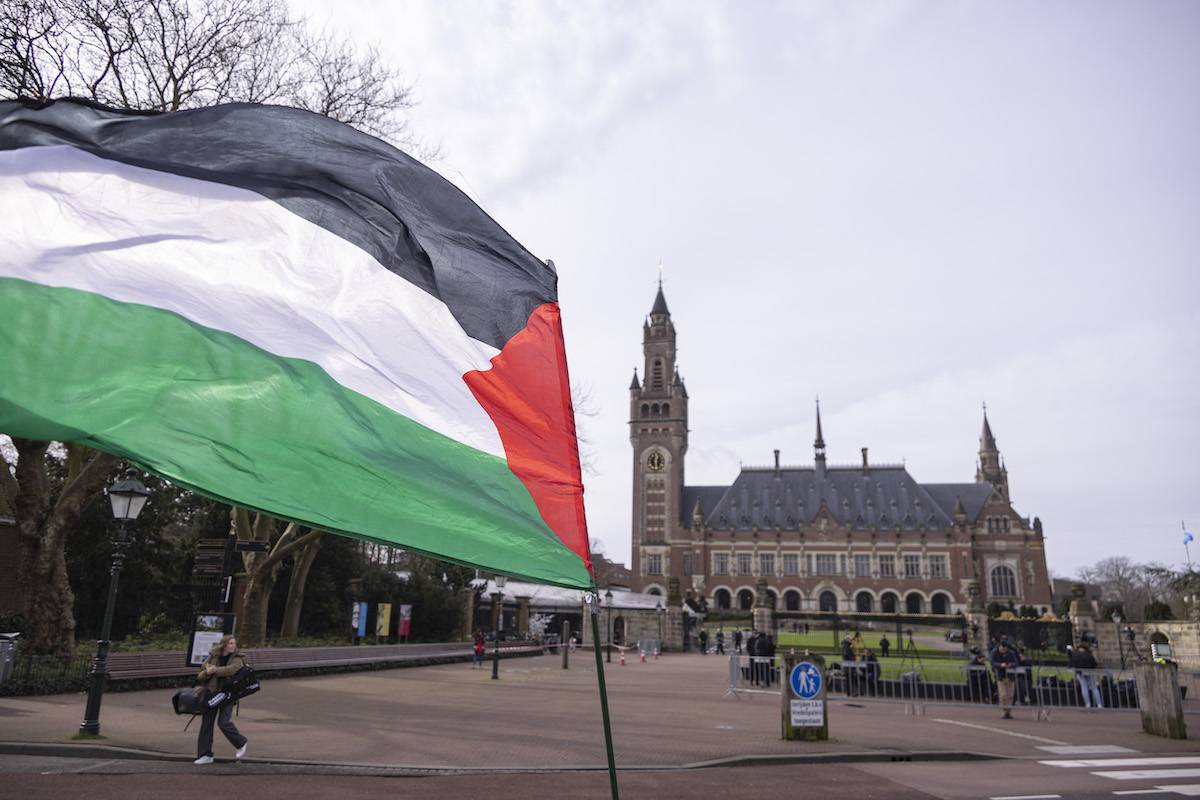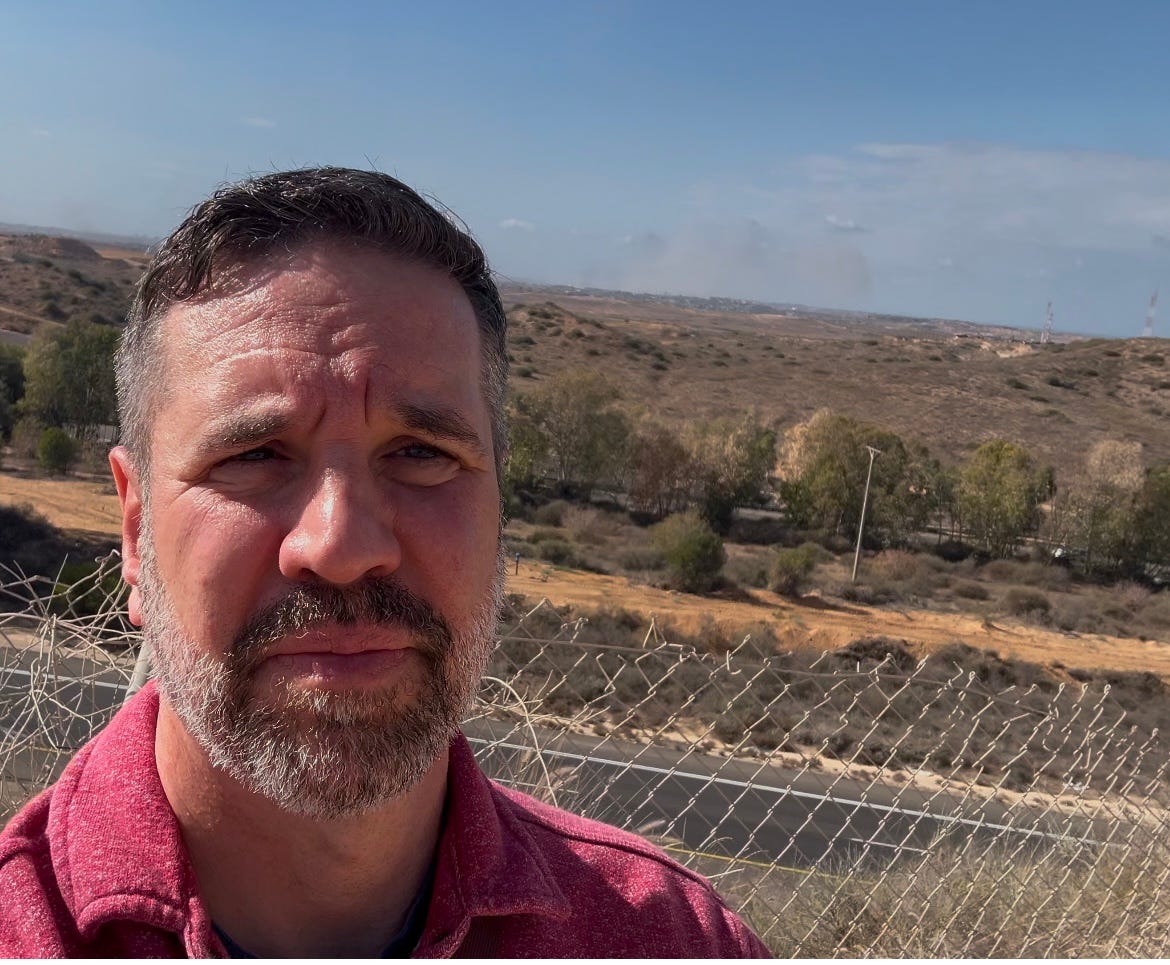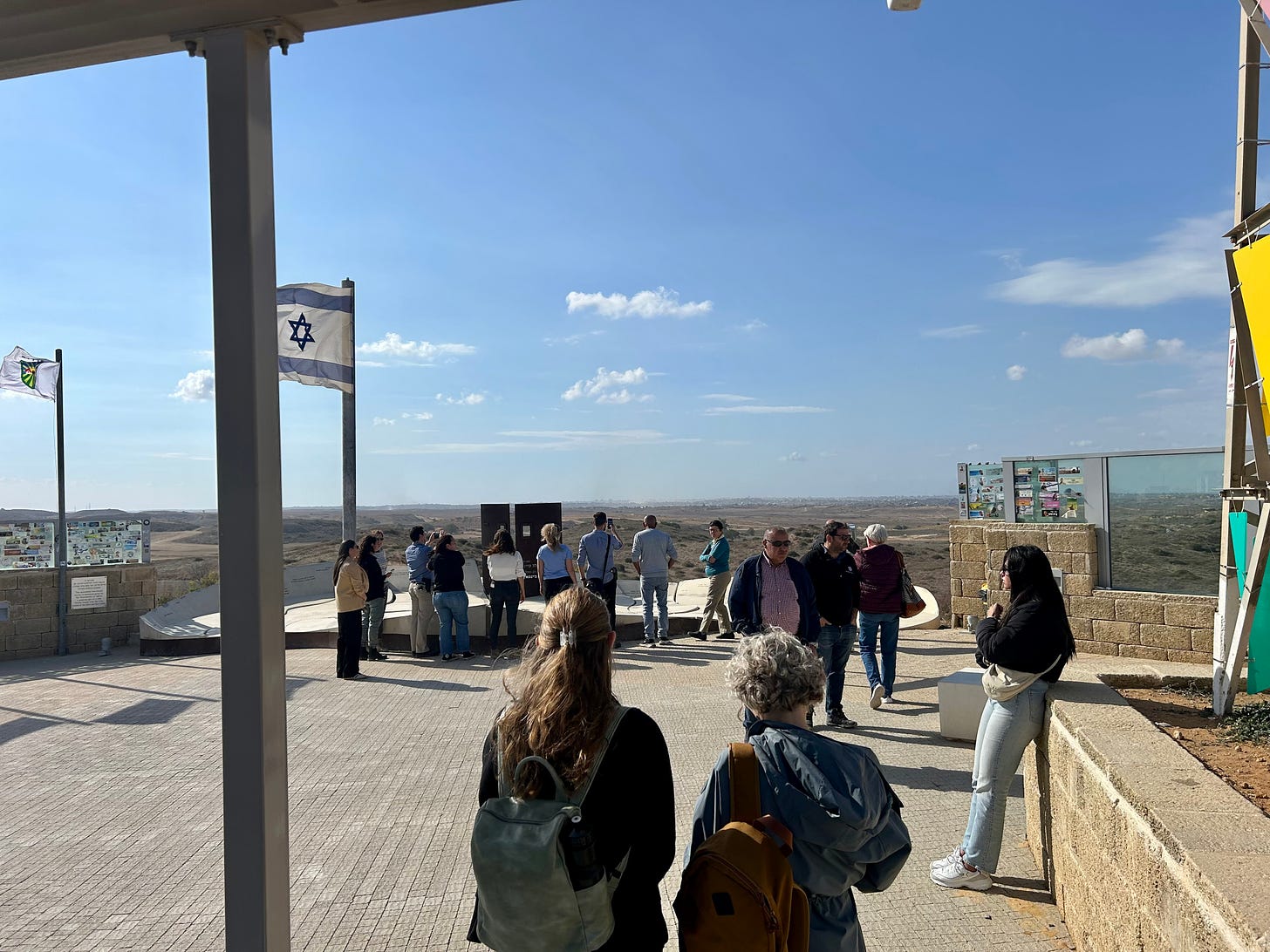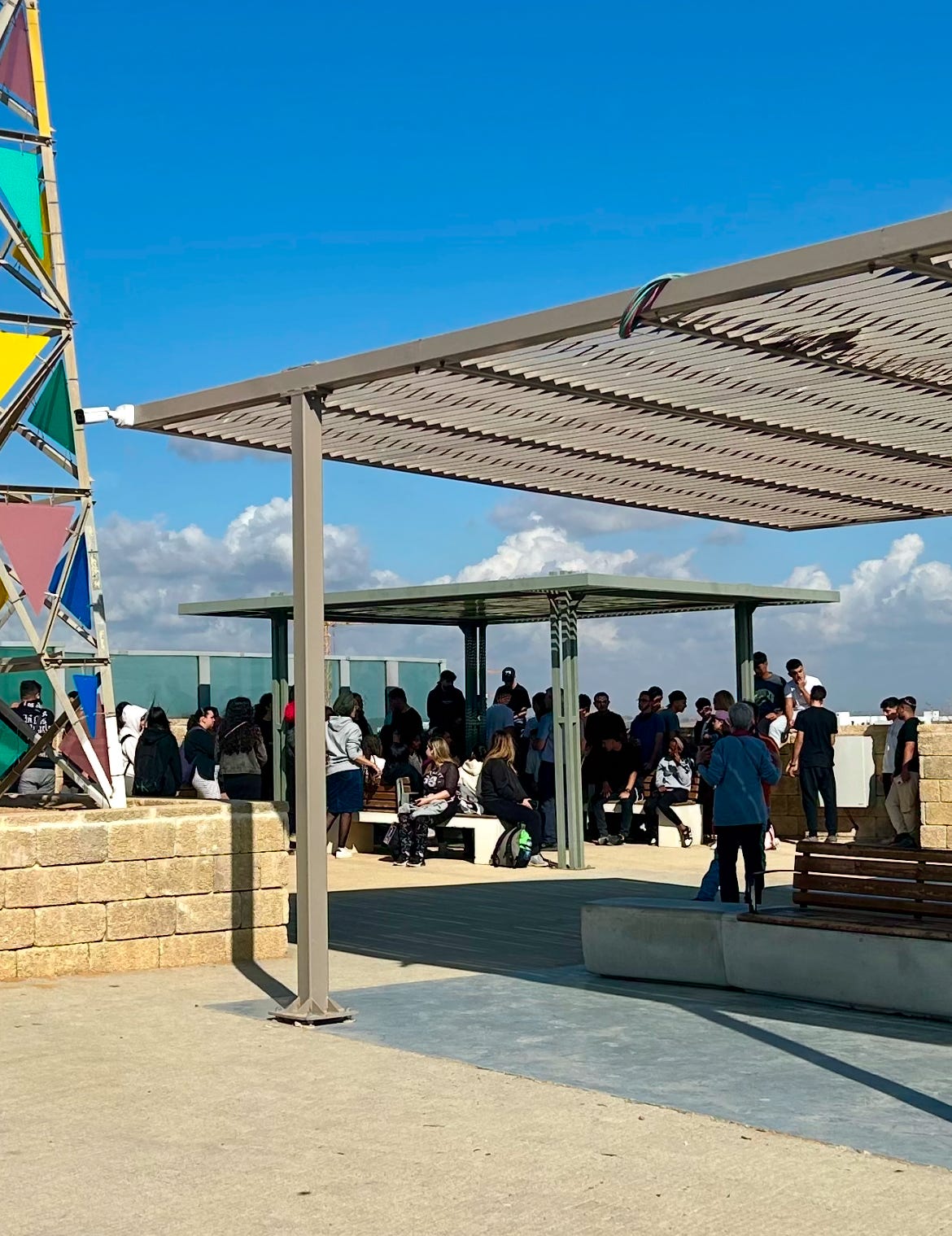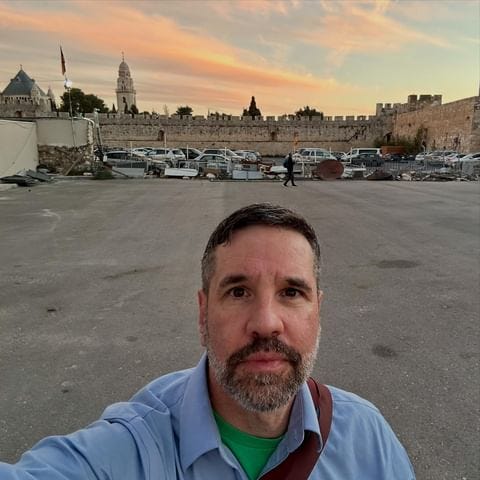Russia’s missile ‘warning’ to Ukraine and West: what we know
By AFP
November 21, 2024

The nature of the the missile remains unclear - Copyright COME BACK ALIVE/AFP -
Didier LAURAS
Russia on Thursday fired an experimental missile at Ukraine in a clear warning of its capabilities, officials from Western governments said, even as they pushed back against Ukrainian claims of a more provocative action by Moscow.
Ukraine initially accused Russia of firing an intercontinental ballistic missile (ICBM) in combat for the first time in history.
But a US official, who spoke on condition of anonymity, said Russia had not fired an ICBM but rather an “experimental” medium-range ballistic missile.
In an address late Thursday, President Vladimir Putin confirmed Russia had used a new, experimental “hypersonic” medium-range ballistic missile named “Oreshnik” (“Hazel”) in an attack on Dnipro.
In what analysts said was intended as a warning to the countries arming Ukraine, the Russian leader hinted the missile was capable of unleashing a nuclear payload.
– What was fired?
Analysts and the United States pushed back against Kyiv’s initial claims that Moscow had launched a nuclear-capable ICBM as part of a barrage towards the central city of Dnipro.
As their name suggests, intercontinental ballistic missiles are capable of striking one continent from another, with a range of at least 5,500 kilometres (3,400 miles).
Intermediate-range missiles by contrast typically have a reach of between 3,000 and 5,500 kilometres — still long enough to make good on Putin’s threat of striking the West.
In his speech, the Kremlin leader said Russia had tested one of its “newest intermediate-range missile systems in combat conditions. In this case, a ballistic missile with a non-nuclear hypersonic configuration.”
Kremlin spokesman Dmitri Peskov said Moscow had informed Washington of the missile’s launch half an hour before it was fired through an automatic nuclear de-escalation hotline, in remarks cited in state media.
While not naming the missile used or giving technical specifications, the US official said Russia “likely possesses only a handful of these experimental missiles”.
“Ukraine has withstood countless attacks from Russia, including from missiles with significantly larger warheads than this weapon,” the official said.
In London, a spokesman for British Prime Minister Keir Starmer told reporters that Russia’s strike on Ukraine was a “ballistic missile” with “a range of several thousand kilometres”, the first time Moscow had used such a weapon in the war.
– What is the context?
Tension has been building between Moscow and Kyiv’s allies in the West since Ukrainian forces struck Russian territory with Western-supplied long-range weapons on Tuesday after getting the green light from Washington.
US President Joe Biden gave Ukraine the go-ahead to fire the missiles into Russian territory for the first time while Washington will soon provide Ukraine with antipersonnel land mines to shore up its defences against Russian forces.
On Tuesday, Putin signed a decree lowering the threshold for using nuclear weapons, a move Western powers condemned as “irresponsible”.
Biden is moving to boost Ukraine’s war effort in the final two months of his administration, before Donald Trump, who has repeatedly promised to end the war quickly, takes power in January.
“The United States will continue to surge security assistance to Ukraine to strengthen capabilities, including air defence, and put Ukraine in the best possible position on the battlefield,” the official said.
In London, the British government spokesman said of the Russian strike: “It is another example of reckless behaviour from Russia, which only serves to strengthen our resolve in terms of standing by Ukraine for as long as it takes.”
NATO spokesperson Farah Dakhlallah said Russia’s use of the missile would “neither change the course of the conflict nor deter” the US-led defence alliance from backing Kyiv.
– What message is Moscow seeking to send?
Despite the initial confusion about the nature of the missile fired, it is clear the strike on Dnipro was unusual and aimed at grabbing the attention of Kyiv and its allies.
“We are really on something unprecedented, and it is much more a political act than a military act. The cost-effectiveness ratio of the attack is zero,” said Heloise Fayet, a researcher at the French Institute of International Relations.
“This change of scale is significant,” she said, adding this was “the first use by the Russians on the battlefield of a missile with a range greater than 2,000 kilometres”.
But she said the use of this missile would “not change the situation significantly on the operational level. They obviously have very few and they are expensive.”
Local authorities said an infrastructure facility was hit in Dnipro and two civilians were wounded.
For Nick Brown of British defence analysis organisation Janes, using the missile was “really about sending an escalatory message or warning, an expensive and potentially dangerous way for Russia to rattle its sabre.”
According to the US official: “Russia may be seeking to use this capability to try to intimidate Ukraine and its supporters… but it will not be a game changer in this conflict.”
Putin hints at strikes on West in ‘global’ Ukraine war
By AFP
November 21, 2024

The attack on Kyiv is the latest in an uptick in escalating strikes on Ukrainian cities, mainly in the south of the war-battered country - Copyright POOL/AFP NICOLAS TUCAT
Florent VERGNES
Russian President Vladimir Putin said Thursday that the conflict in Ukraine had characteristics of a “global” war and did not rule out strikes on Western countries.
The Kremlin strongman spoke out after a day of frayed nerves, with Russia test-firing a new generation intermediate-range missile at Ukraine — which Putin hinted was capable of unleashing a nuclear payload.
Ukraine’s President Volodymyr Zelensky branded the strike a major ramping up of the “scale and brutality” of the war by a “crazy neighbour”, while Kyiv’s main backer the United States said that Russia was to blame for escalating the conflict “at every turn”.
Intermediate-range missiles typically have a reach of up to 5,500 kilometres (3,400 miles) — enough to make good on Putin’s threat of striking the West.
In a defiant address to the nation, Russia’s president railed at Ukraine’s allies granting permission for Kyiv to use Western-supplied weapons to strike targets on Russian territory, warning of retaliation.
In recent days Ukraine has fired US and UK-supplied missiles at Russian territory for the first time, escalating already sky-high tensions in the brutal nearly three-year-long conflict.
“We consider ourselves entitled to use our weapons against the military facilities of those countries that allow their weapons to be used against our facilities,” Putin said.
He said the US-sent Army Tactical Missile System (ATACMS) and British Storm Shadow payloads were shot down by Moscow’s air defences, adding: “The goals that the enemy obviously set were not achieved”.
Kremlin spokesman Dmitri Peskov did however say Moscow informed Washington of the missile’s launch half an hour before it was fired through an automatic nuclear de-escalation hotline, in remarks cited in state media.
He earlier said Russia was doing everything to avoid an atomic conflict, having updated its nuclear doctrine this week.
White House spokeswoman Karine Jean-Pierre told reporters that Washington saw no need to modify the United States’ own nuclear posture in response.
– ‘Reckless behaviour’ –
Ukraine had earlier accused Russia of firing an intercontinental ballistic missile (ICBM) for the first time in history — a claim later downplayed by Washington.
The Ukrainian air force said Moscow had launched the missile as part of a barrage towards Dnipro, where local authorities said an infrastructure facility was hit and two civilians were wounded.
Putin said that Russia had carried out “testing in combat conditions of one of the newest Russian… missile systems” named “Oreshnik”.
Criticising the global response to the strike — “final proof that Russia definitely does not want peace” — Zelensky warned that other countries could become targets for Putin too.
“It is necessary to urge Russia to a true peace, which is possible only through force,” the Ukrainian leader said in his evening address.
“Otherwise, there will be relentless Russian strikes, threats and destabilisation, and not only against Ukraine.”
The attack on Dnipro comes just days after several foreign embassies shuttered temporarily in the Ukrainian capital, citing the threat of a large-scale strike.
“It is another example of reckless behaviour from Russia,” a spokesman for British Prime Minister Keir Starmer told reporters.
The spokesman for UN Secretary-General Antonio Guterres, Stephane Dujarric, said the new missile’s deployment was “another concerning and worrying development,” warning the war was “going in the wrong direction”.
Yet a US official played down the threat, saying on condition of anonymity that Russia “likely possesses only a handful of these” experimental missiles.
– UK ‘directly involved’ –
The head of the Dnipropetrovsk region where the city of Dnipro is located said the Russian aerial bombardment damaged a rehabilitation centre and several homes, as well as an industrial enterprise.
“Two people were wounded — a 57-year-old man was treated on the scene and a 42-year-old woman was hospitalised,” said the official, Sergiy Lysak.
Russia and Ukraine have escalated their use of long-range missiles in recent days since Washington gave Kyiv permission to use its ATACMS against military targets inside Russia — a long-standing Ukrainian request.
British media meanwhile reported on Wednesday that Kyiv had launched UK-supplied Storm Shadow missiles at targets in Russia after being given the green light from London.
With ranges of 300 and 250 kilometres respectively, both missile systems’ reach is far dwarfed by the experimental intermediate-range system fired by Russia.
Russia’s envoy to London on Thursday said that meant Britain was “now directly involved” in the Ukraine war, with Andrei Kelin telling Sky News “this firing cannot happen” without UK and NATO support.
But the White House’s Jean-Pierre countered that it was Russia who was behind the rising tensions, pointing to the reported deployment of thousands of North Korean troops to help Moscow fight off a Ukrainian offensive in Russia’s border Kursk region.
“The escalation at every turn is coming from Russia,” Jean-Pierre said, adding that the United States had warned Moscow against involving “another country in another part of the world” — referring to Pyongyang.
– Kyiv in retreat –
The defence ministry in Moscow said Thursday its air-defence systems had downed two Storm Shadows, without saying whether they had come down on Russian territory or in occupied Ukraine.
The missile escalation is coming at a critical moment on the ground for Ukraine, as its defences buckle under Russian pressure across the sprawling front line.
Russia claimed deeper advances in the war-battered Donetsk region, announcing on Thursday that its forces had captured another village close to Kurakhove, closing in on the town after months of steady advances.
Moscow’s defence ministry said Russian forces had taken the small village of Dalne, five kilometres (three miles) south of Kurakhove.
Lysak, the governor of the Dnipropetrovsk region, said that 26 people had been wounded in another strike on the town of Kryvyi Rig, where Zelensky was born.
Op-Ed: Escalation or desperation? Russia fires ballistic missile at Ukraine
By Paul Wallis
DIGITAL JOURNAL
November 22, 2024

Ukraine has long demanded authorization to use the US-made ATACMS missile against targets inside Russia - Copyright DoD/AFP John Hamilton
According to Ukraine, Russia fired the first ICBM ever used in warfare at the Ukrainian city of Dnipro. Two people were injured by the conventional warhead.
The missile was part of a barrage of various types of missiles including hypersonic missiles. Other sources say it was an intermediate-range ballistic missile, which is a sort of scaled-down ICBM with a shorter range.
The attack comes after the US approved the use of long-range ATACMS missiles by Ukraine for strikes inside Russia.
The attack also came with a lot of rhetoric attached. Russia has now “updated” its nuclear doctrine to state that any non-nuclear power acting in partnership with a nuclear power is to be considered a “joint attack”.
This is more or less standard Russian dogma, emphasizing its nuclear capabilities. There is no comparison between an ATACMS missile and any sort of nuclear weapon.
Russia’s military situation in Ukraine is now such a total failure that rhetoric makes far more headlines than actual military achievements. Most of their “advances” in Donetsk are minuscule, taking back what they claim to be their own territory.
In an additional escalation, this time a real one, North Korean troops and weapons are said to be operating in Russia. Various sources state these troops are operating in the Kursk region and taking significant casualties. They don’t seem to be particularly combat-effective.
Despite claims by the incoming Trump administration, this situation is likely to be difficult to defuse. Russia is trying to save face. Its military has taken a severe beating for nearly three years.
Ukraine won’t back down. Ukraine has nothing to gain from a pseudo-peace which may simply turn into another attack after the Russian military has regrown itself. A lasting peace is beyond US capabilities to deliver.
The big loser in a failed peace deal would be the US. America would simply look weak and naïve, and in many ways simply stupid. It would also look as though the US was trying to save Russia, which is the exact opposite of saving face for Putin.
The highly skeptical rest of the world wouldn’t be impressed. It’s the wrong message to send to this planet’s other 8 billion people. Trump has a unique ability to damage America’s reputation and credibility in a few sentences. He spent most of his first term annoying America’s allies making baseless statements about them.
He’s not seen as a “strong leader” outside the US. He’s seen as a highly personally compromised figurehead at best and chronically incompetent on average. He certainly can’t even pretend to lead the rest of the world social media propaganda notwithstanding.
That’s a big shift in the wrong direction. America was in fact a leader of the free world. Under Trump, it’s likely to be purely antagonistic and entirely insular, with no trust.
Add to this self-inflicted mess the various other messages about tariffs, deportations, and democracy in general, and the US could lose just about all of the goodwill of the last century in a month or so.
The winner would be China. In comparison to a tariff-addled, backward-looking, fact-ignoring America and a crippled Russia, China can only look good.
Nothing can save Russia from the consequences of this idiotic self-inflicted war. Europe is rearming. China can pull the plug whenever it wants. It’s game over in so many ways.
America can only be “great” by enforcing a just and permanent peace.
Let’s see who the vertebrates are in this scenario.
___________________________________________________
Disclaimer
The opinions expressed in this Op-Ed are those of the author. They do not purport to reflect the opinions or views of the Digital Journal or its members.
Inside the South Korean weapons factory that could supply Kyiv
By AFP
November 21, 2024

South Korean engineers work on a 120mm self-propelled mortar at the Hanwha Aerospace factory in Changwon - Copyright AFP JUNG YEON-JE
Kang Jin-kyu
At the outskirts of a South Korean industrial city, workers at a sprawling weapons factory were conducting final-stage testing for a newly built surface-to-air defence system that could, eventually, head to Ukraine.
Longstanding domestic policy bars Seoul from sending weapons into active conflict zones, but ever since its spy agency accused the nuclear-armed North last month of sending thousands of soldiers to help Moscow fight Kyiv, South Korea has warned it might change course.
If so, likely top of the list for Ukraine would be the “Cheongung” — or Sky Arrow — air defence system, a domestically-produced Iron Dome-style interception shield that AFP saw Thursday during an exclusive tour of the Hanwha Aerospace factory in the southern city of Changwon.
As the melody of Beethoven’s Fur Elise played on repeat over the in-house speaker, veteran welders worked on huge cylinders that will become part of the inceptor system, which is defensive in nature — although Hanwha also produces an attack-focused variant.
“The Cheongung system can be thought of as similar to the US Patriot missile system,” said senior manager Jung Sung-young at Hanwha Aerospace, South Korea’s largest defence contractor.
Ukraine is reliant on Western air defence systems, particularly Patriots, to protect itself from Russian missile barrages — and has been calling for more deliveries.
Washington said in June it would prioritise deliveries to Kyiv, ahead of other countries that have placed orders.
But were South Korea, which remains technically at war with the nuclear-armed North and has maintained production of weaponry long ignored by Western arms industries, to get involved, it could potentially make a huge difference, experts say.
“As a divided nation, we have systematically established and implemented standards at the national level, from the development of these weapon systems to quality control,” said Jung.
“The quality, capability and manufacturing supply chain of our products is sufficiently competitive compared to those of other countries,” he added.
Whether — or how — South Korea decides to help Ukraine directly depends on “the level of North Korean involvement”, President Yoon Suk Yeol said earlier this month, adding Seoul was “not ruling out the possibility of providing weapons.”
If South Korea were to supply arms, the initial batch would be defensive in nature, Yoon said.
– Combat ready –
To fend off the steady barrage of missiles that have targeted Ukraine’s energy infrastructure and civilian areas, Kyiv urgently needs more air defences, Han Kwon-hee of the Korea Association of Defence Industry told AFP.
“Counteroffensives require stability in the rear zones, which is why Kyiv has also conducted drone attacks within Russia, including Moscow,” Han explained.
“They will help Ukraine hold off Russia’s offensives by intercepting drones and missiles flying deep into their territory,” he said — a huge boost for Kyiv, alongside the recent US move to let it use long-range American missiles against targets inside Russia.
The South has remained combat-ready since its 1950-53 war with the North ended in a truce, and while Hanwha Aerospace, South Korea’s largest defence contractor, was once seen by analysts as retrograde for its focus on land weapons, it is now in high demand.
AFP saw a wide range of weaponry moving along assembly lines at the company’s sprawling Changwon factory, from infantry armoured vehicles to surface-to-air missile systems designed to intercept incoming missiles.
The heightened geopolitical tensions in Europe have heavily benefited the South Korean company, which saw its on-year operating profit soar over 450 percent in the latest quarter to $343.3 million.
It has signed major arms deals with countries such as Poland and Romania, including the export of K9 Howitzers and Chunmoo missile systems.
– Weapons exports –
Seoul has long harboured ambitions to join the ranks of the world’s top arms exporters — aiming to be the fourth-largest, behind the US, Russia and France — something that is now possible, industry research indicates.
It has already sold 155mm artillery shells to Washington — but with a “final user” agreement in place meaning the United States would be the military that uses the munitions.
Experts have said this allows the United States to then provide their own shells to Kyiv.
Hanwha’s other weapons offer that could shift the balance of war in Ukraine is its Chunmoo guided missile system, experts said.
“With a maximum range of 290 km (180 miles), Chunmoo can strike targets in Pyongyang if launched from the border area in the South,” said Choi Gi-il, professor of military studies at Sangji University.
“What Ukraine urgently needs to turn the war in its favour are offensive weapons like Chunmoo missiles and K9 howitzers, capable of inflicting significant damage on the enemy,” Choi added.
“If North Korea’s direct involvement in the war escalates, (Seoul) may consider sending lethal weapons, in addition to defensive ones.”
Nationalist raves galvanise traumatised Ukrainian youth
By AFP

The mix of party and military reflects the split reality of young Ukrainians - Copyright AFP Andrej ISAKOVIC
Barbara WOJAZER
At a rave in a former silk factory in Kyiv, Bogdana Lukyanchuk was out partying for the first time since her father was killed fighting Russian forces in eastern Ukraine.
The party raised funds for the Third Assault Brigade, a controversial unit which has gained countrywide name recognition thanks to its military feats and marketing.
“I knew it was a charity event with people that I respected, so I could come and let my emotions run wild for just a day,” Lukyanchuk said, showing a photo of her dad with a broken heart emoji on her phone screensaver.
“There is still life in Ukraine. Life pulsates. Blood pulsates,” the 23-year-old said, shouting over the loud bass.
The Saturday night rave featured a combat drone simulator and merchandise from the Third Assault Brigade.
It was also attended by members of a linked nationalist youth group, Centuria.
The mix of party and military reflected the split reality of young Ukrainians, whose attempts to enjoy life are constantly marked by grief, air raid alerts and strikes.
It showed the efforts being made to galvanise young people exhausted by the war as the Russian invasion nears the three-year mark.
– ‘Gently involve young people’ –
Around 80 percent of Ukrainians have a close relative or friend who has been wounded by Russian forces, according to a survey from the Kyiv Institute of Sociology.
To process the violence against their country, some young Ukrainians find a sense of purpose and camaraderie in nationalist military organisations.
Lukyanchuk came to the rave with friends she met at workshops teaching civilians to handle rifles and use tourniquets, life-saving devices to staunch massive bleeding.
“There are conscious people here,” she said.
She worried that others were forgetting the war.
The patriotic fervour of the beginning of the war has subsided, leaving brigades short of funding and recruits.
In that struggle, the Third Assault Brigade, created by far-right politician Andriy Biletsky, has distinguished itself with its Instagrammable branding.
A neon orange logo in support of the brigade lit up the drone simulation room, which looked like a gamer’s den filled with teenagers slouched on a couch.
Some watched the drone flight simulator on a large computer screen, over which hung the white neon logo of Centuria.
Centuria says it “despises the modern cult of weakness” and aims to raise “strong and proud Ukrainians”.
The group boasts over 16,500 followers on Instagram, where it posts about a variety of events ranging from lectures to knife fights.
The blend of genres serves a purpose, said rave organiser Viktor Mazur.
“We gently involve young people. We don’t do it harshly with heavy propaganda but rather through entertainment, and that way we develop their loyalty,” the 29-year-old said.
Sofia Tabatska was surprised how quickly she worked out how to fly the drone under the guidance of an instructor.
“It’s like playing a computer game, like Grand Theft Auto,” said the 24-year-old.
“It would be nice if I could use it in some way in the future,” Tabatska said.
But she ruled out joining the army any time soon, describing herself as a pacifist.
– ‘Children of the war’ –
Marianna Tkalych, a psychologist, said some militarisation of Ukrainian society was inevitable following the Russian invasion.
But she believes the effect may not be lasting and the real test will come when the war ends and Ukraine’s political process, frozen by martial law, resumes.
The popularity of patriotic and militaristic organisations after the war, she said, will hinge on Ukraine’s capacity to deal with a traumatised generation.
“There will be some young people who have not found their purpose in any other sphere and who haven’t experienced normal life,” said Tkalych, who also heads the research platform Rating Lab.
“The generation growing up right now are children of the war.”
Fourteen-year-old Yury was just a toddler when Russian-backed forces launched a first armed aggression in eastern Ukraine in 2014.
He can hardly remember a life outside the conflict that escalated in 2022.
The teenager says he plans to enlist if the war is still ongoing when he turns 18.
He is already preparing with Centuria.
“I found myself there,” he said, mentioning classes on using assault rifles and fighting.
He said he thought his family would support his plans.
“My mum knows. I hope it will be okay.”


